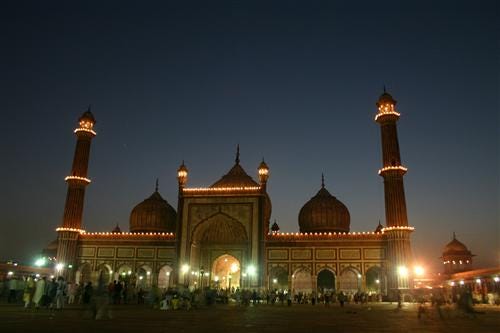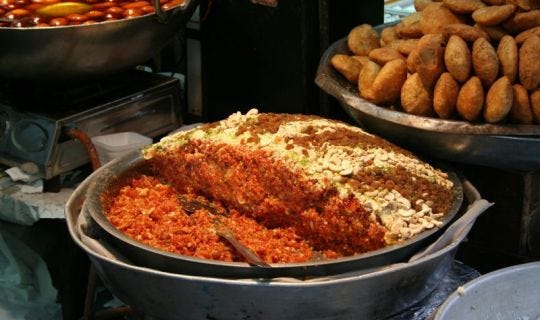These days, the city of Delhi has been famous for a lot of reasons and landmarks. Be it the bustling Karol Bagh, Chandni Chowk, the glamorous Connaught Place or the fancy underground Palika Bazaar — the national capital has always been the focal point of attraction for many tourists. Not to forget are the national landmarks of India Gate, the Parliament and the Rashtrapati Bhavan. However, what makes the city a little more interesting is its past, particularly structures from the Mughal era.
Perhaps the most important and appealing Mughal structure in the city is Jama Masjid. As the name denotes, it is a place of worship which serves as an import tourist destination of the city as well. It is located in the heart of Delhi, and is very accessible from the newer part of the city. The mosque is said to be one of the biggest in the whole of South Asia (India, Pakistan, Bangladesh, Sri Lanka and Nepal taken together). I visited the mosque twice in the year 2000 and 2010, and I can safely claim that nothing has changed ever since.
Back in Time
The mosque was built by the fifth Mughal Emperor Shah Jahan. The foundation was laid in an area then called Shahjahanabad. The construction of the complex took six years to complete, with the initial construction having started in 1650 AD. An estimated 6,000 workers were involved in the construction.
What to Expect Inside
You will find a massive courtyard inside with a central washing area. On Fridays, the Islamic Sabbath, the water fountains are put on display. The main prayer hall is located towards the western end called the Qiblah. You can step inside and look at the magnificent chandeliers inside, or you can simply sit on the steps and enjoy the cool evening breeze while you chat with tourists. Yes, the best time to visit is two hours prior to sunset. My favourite view is that of the Red Fort, which lies exactly opposite, though at some distance. Beware of thieves and keep a close eye on your footwear. If possible, carry them with you wherever you go.
Perhaps, the most interesting historical stuff you can see around are the relics of Prophet Muhammad (PBUH), his footmarks as well as a copy of the Qur’an handwritten by one of his companions. I along with family and friends were shown these by a caretaker as we had come to visit Delhi from an extremely far-ff region. It becomes all the more amazing to witness them when you are told that such relics are only available in certain other parts of the world — Istanbul in Turkey and Cairo in Egypt. Make sure you insist on these relics when you are inside. They might not give in easily, but you can insist the relevant authorities a little bit without being forceful.
Something to Shop
The adjacent areas are food-lovers’ paradise. You can get the highly expensive Tandoori and Mughlai items from well-known restaurants such as Al Jawahar and Karim’s. The slightly less expensive versions of Biryani are also available in the area. Try out the Lassi and Jalebi too. The area will be of particular interest for girls and women as there are a lot of ethnic wear items and bangles to choose from. If you are a book-lover, there are a book shops too. Oops, most book stalls here are Urdu stalls with many offering English collections as well. If you are a foreigner, currency exchange shops are available in plenty here.
How to Reach
You can hire an auto from any part of the city to reach Jama Masjid. The nearest metro station is Chawri Bazar. Accessibility will never be an issue.
The place will offer you a lesson of history with spectacular views and spiritual enlightenment. The most important factor to keep in mind here is to respect local traditions. Women are advised to avoid wearing shorts and sleeveless. Modest clothing can also be hired from the northern gate. It can be assured that it will be a visit you will never forget.
Book your bus tickets form the leading bus ticket booking portal which has many travel operators providing bus services like SVR Travels,Paulo Travels,Konduskar Travels,Greenline Travels and Patel Travels.



No comments:
Post a Comment